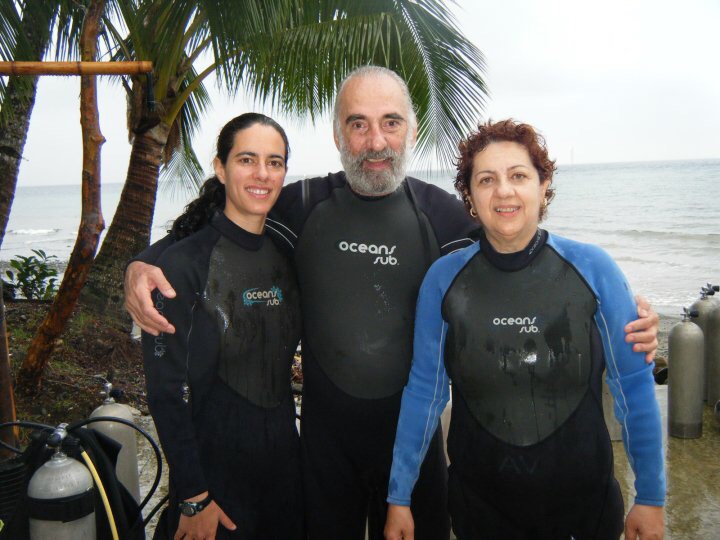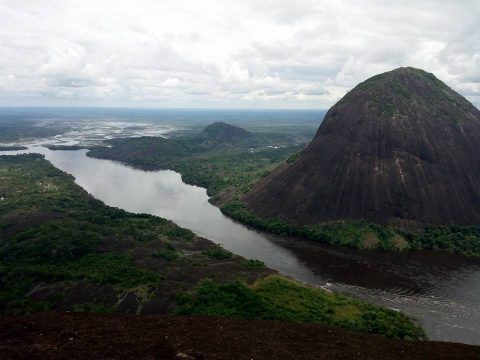When your road is a river: Helping Colombia’s indigenous communities go renewable
My father loved nature. He had a deep affection for landscapes and trees, and he loved sharing that affection with his kids, getting in the car for drives and pointing out this mountain or that species of palm. But he was also very sensitive to social conditions in my country, a concern he planted in us, his kids.
I am a biologist by training, though I never saw myself lost in the jungle gathering plant samples. I have always been concerned with the question of how people and environments collide, and the tension between development and conservation. This concern eventually led me to a PhD in Development Economics and permeates most of my work.
I have been fascinated by the prospect of bringing renewable energy in the form of electrified boats to remote parts of Colombia’s Amazon, where rivers have long served as the main – and sometimes only – mode of transportation for indigenous communities.

In promoting low emission development in rural communities (LED-R), transportation is a recurring issue. For indigenous communities in the Amazon region, row boats are common, but for longer journeys diesel-powered motor boats are the norm. And so, not surprisingly, the high price of gas is an ongoing struggle.
The cost of a liter of gas in more remote parts of Colombia’s Amazon can sometimes be as high as three times the cost in the capital, Bogota. And often available sources of diesel are controlled by local families who dictate prices. For indigenous communities already disconnected from economic opportunity, this can be crippling.
But there are broader impacts.
Expensive fuel makes transporting goods – whether from logging or other forest products – to urban centers less competitive. And while roads can help reduce transport costs, they are also a key factor in deforestation. They open regions previously closed to and protected from development.
This is where renewable energy comes in, presenting a clean and cheaper alternative to diesel that can increase connectivity to markets for indigenous communities while also reducing greenhouse gas emissions harmful to the environment.
This is not a new idea. Indigenous communities in Ecuador, working with UC Berkeley’s Renewable and Appropriate Energy Laboratory (RAEL), have already designed a prototype of an electric boat. This is what we are trying to implement in Colombia.
There are two pilot programs that we are currently working to develop in partnership with RAEL and the San Francisco-based company Dissigno. One is in Guainía, a region that borders Venezuela and Brazil to the east. The area is home to a number of resguardos – regions where indigenous communities have collective land rights.
Rivers are a major source of transportation in Guainía, which borders Venezuela and Brazil to the east. (Image credit: Arcangel Agapito.)
In 2015 I spent a year working with communities in Guainía, educating residents there about REDD+, greenhouse gases and other environmental topics. I developed friendships with several of the local community heads, and when I reached out again for this project, they readily agreed.

The project has two big components, both of which are connected. The first is to strengthen the local tourism sector in a way that gives greater control to indigenous communities, and the second involves bringing renewable energy to the region, which is largely off the country’s main electrical grid.
With readily available energy, communities will gain access to basics like fully functioning refrigerators and the internet, and open up educational opportunities now unavailable. Those in turn help communities be better equipped to reach and welcome visiting tourists.
Getting the right pieces in place will involve a number of crucial steps.
We want to establish a solar micro grid for one or two communities and then modify one of the boats the community has to integrate an electric motor and a spare charger. The area we are targeting is 75 to 80 km from the regional capital by river, so the idea is that tourists would be brought in to the area by gas boats, but once inside the resguardo, the electric boat would be used, reducing both cost and emissions.
This is of course more than just about boats. The broader goal is to help create opportunities for indigenous communities in the Amazon, to help them connect to the market in ways that allow them to determine their own course of development and that preserve the forests they now call home.
For me the project is as much personal as it is professional. I think back to those rides with my father, and to the question that he planted in me. Namely, how do we conserve the natural beauty of Colombia, and what happens with the people in that process.


